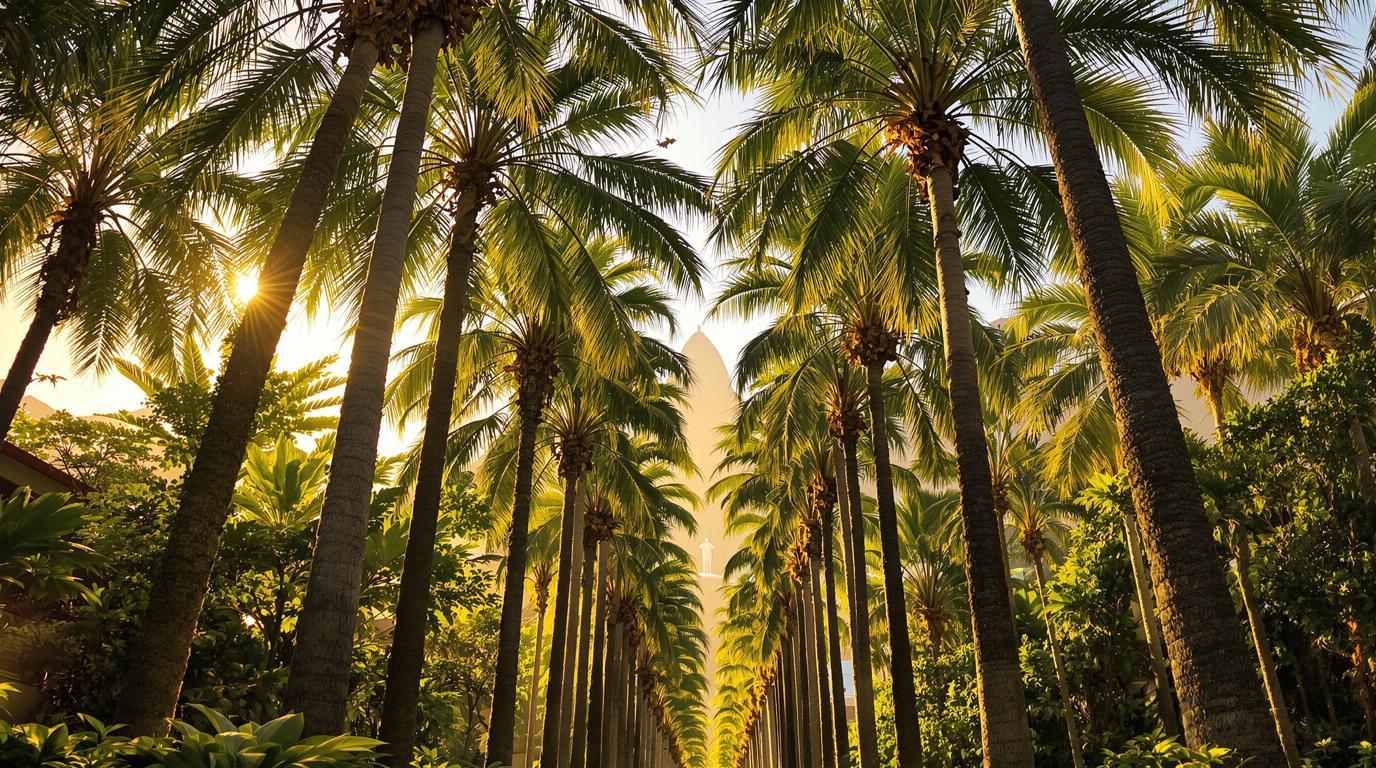Rio’s 200-year-old Botanical Garden might be the world’s most dramatic plant collection. Where else can you stroll beneath 130-foot royal palms while monkeys swing overhead and Christ the Redeemer watches from a distant peak? This 346-acre living museum houses more than 8,000 plant species and offers a serene escape from Rio’s energetic beaches.
A royal garden with imperial roots
Created in 1808 by Portuguese Prince Regent Dom João VI, the garden originally served as a spice plantation to acclimate valuable Asian plants like cinnamon and clove to Brazilian soil. Today, this UNESCO Biosphere Reserve stands as one of the world’s most important botanical research centers while remaining remarkably accessible to visitors.
The most photographed pathway in South America
The garden’s signature feature is the Avenue of Royal Palms – 134 perfectly aligned trees soaring skyward like natural Greek columns. These massive plants were grown from a single mother palm planted in 1809. For the ultimate photo, arrive during golden hour when sunlight filters through the fronds, creating a celestial glow that transforms the pathway into botanical cathedral.
“Every time I walk beneath these palms, I feel like I’m entering a sacred space. They’ve witnessed two centuries of Brazil’s history,” explains head botanist Claudia Martins.
Where the Amazon rainforest meets the Atlantic
The garden’s Japanese section offers serene koi ponds and meticulous landscaping, while the Amazon section recreates the dense jungle atmosphere of northern Brazil. Don’t miss the orchidarium housing over 600 species in a restored 1930s greenhouse. The massive Victoria water lilies with their circular pads can support the weight of a small child – though testing this is strictly prohibited!
Meet the garden’s wild residents
While officially a plant sanctuary, the garden hosts remarkable wildlife. Tufted marmosets swing through the bamboo groves, toucans flash their brilliant beaks among fruit trees, and playful wildlife interactions happen regularly. Early morning visitors might spot sloths moving in slow motion through the treetops.
A botanical time capsule
Beyond plants, architectural treasures dot the landscape. The neoclassical Portal of the Academy of Fine Arts near the entrance was salvaged from a demolished building in downtown Rio. The central fountain arrived from England in the 1900s, and the Japanese Garden contains authentic structures donated by Japan in 1935.
“This garden preserves not just Brazil’s natural heritage but our cultural connections with the world,” says historian Paulo Mendes.
Beyond the typical tourist route
Most visitors stick to the central palm avenue, but venture deeper to find secluded ponds where reflective waters create stunning vistas. The sensory garden, designed for visitors with visual impairments, offers fragrant plants with Braille descriptions – a reminder that nature can be experienced through all senses.
When to visit
The garden welcomes visitors daily (except Mondays when it opens at noon). Early mornings provide the best wildlife viewing and photography opportunities. For a magical experience, visit during the brief flowering period of the impossibly beautiful Victoria amazonica water lilies, whose white flowers open at dusk and turn pink by morning.
Unlike hidden Mediterranean gems or remote Caribbean islands, Rio’s Botanical Garden sits just minutes from famous beaches and urban attractions. Yet stepping through its gates transports you to a world where Brazil’s breathtaking biodiversity takes center stage, reminding us that sometimes the most extraordinary escapes lie hidden in plain sight.
